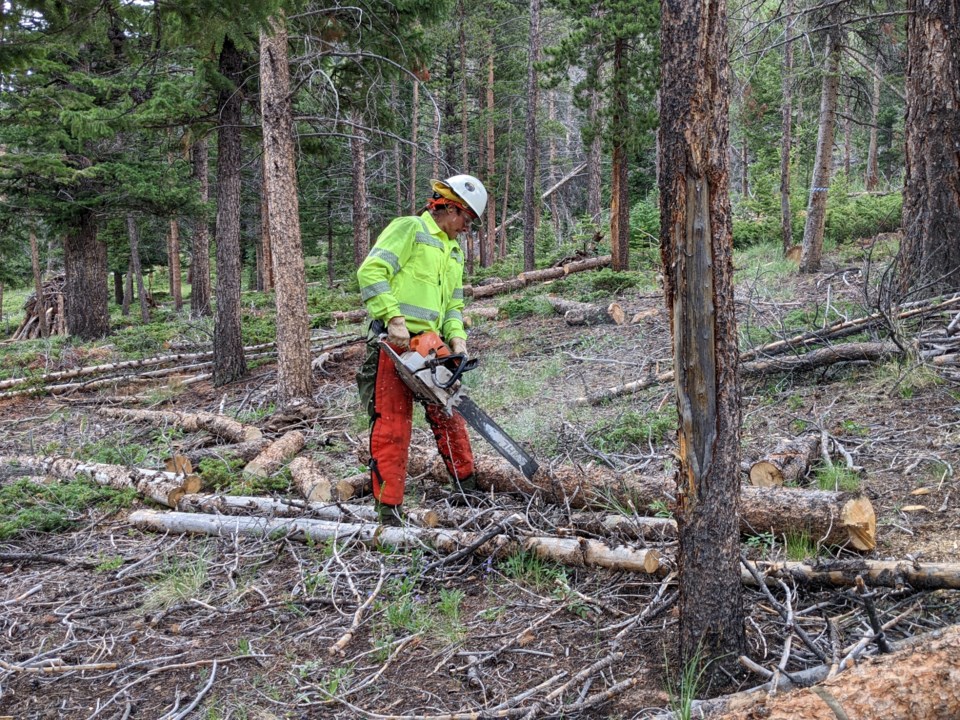NEWS RELEASE
ROCKY MOUNTAIN NATIONAL PARK
*************************
Rocky Mountain National Park announces that hazardous fuels reduction projects are planned to take place in strategic locations this fall and winter season within Rocky Mountain National Park on and near Deer Mountain, as well as within the park boundary west of the Allenspark Trailhead.
The reduction of hazardous fuels is a significant preventative management tool for managing wildlife near structures and communities. These projects are done to protect life and property and to enhance the safety of firefighters and their ability to manage fire within the park. When fighting the East Troublesome Fire in 2020 and the Fern Lake Fire in 2012, firefighters were able to take advantage of previous and existing prescribed fire and hazardous fuels treatment areas that provided a buffer between the fire and the Town of Estes Park. Prior hazard fuels projects were instrumental in stopping the fire from jumping Bear Lake Road and Trail Ridge Road.
The planned projects will create openings and gaps in the forest, which mimic the outcome of a stand-replacing fire and reduce fuels available for a wildfire. These projects will take place in areas of subalpine forest dominated by lodgepole pine trees. The work will include removing dead trees, dead and down logs, and ladder fuels which can carry a fire burning in low-growing vegetation to surrounding taller vegetation. The removal of ladder fuels may include removing the lower limbs of live trees and the removal of live some live trees. Resulting woody materials will be piled on site and burned during winter, when conditions allow.
Certain vegetation, such as aspen and limber pine trees, and trees which are critical for wildlife habitat will be avoided.
Fuels reduction projects cannot be a stand-alone defense against wildfire. It is advisable that additional fuels reduction be completed on private property to meet Firewise mitigation and Hardening Your Home efforts. To learn more, please visit the following weblinks:
- https://www.nfpa.org/Public-Education/Fire-causes-and-risks/Wildfire/Preparing-homes-for-wildfire.
- https://www.readyforwildfire.org/prepare-for-wildfire/get-ready/hardening-your-home/.
For more information on Rocky Mountain National Park, visit our website at www.nps.gov/romo or call the park’s Information Office at (970) 586-1206.
*************************


.jpg;w=120;h=80;mode=crop)
